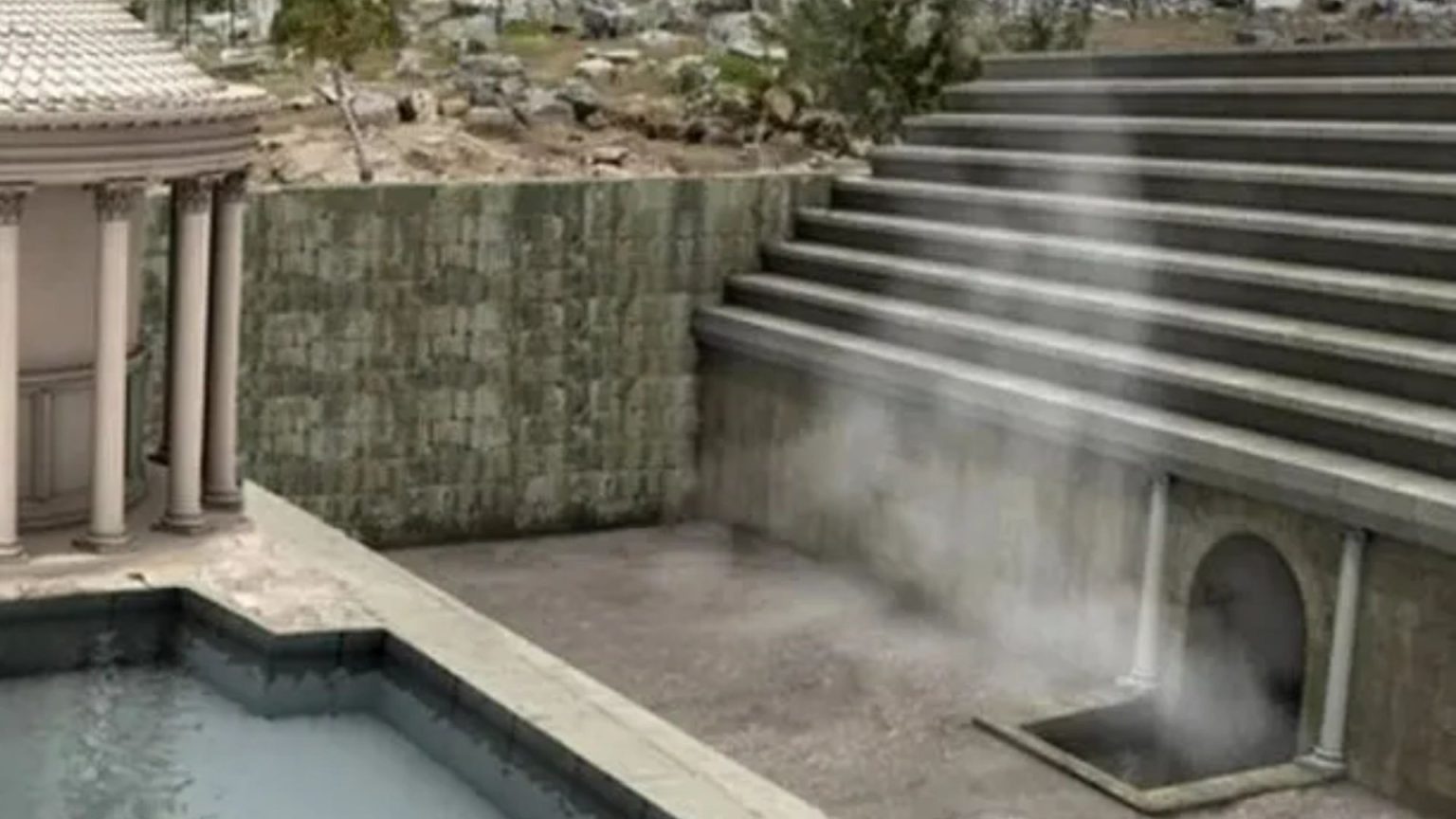Hierapolis, an ancient Turkish city steeped in history and mythology, houses what is considered the oldest “Gate to Hell” on Earth. Known as Pluto’s Gate or Ploutonion, this stone archway served as a portal for animal sacrifices to Pluto, the Greek god of the underworld. Unearthed in 2013 amidst the ruins of Hierapolis, now located in the modern-day town of Pamukkale, this chilling gateway offers a glimpse into ancient religious practices and the potent forces of nature that permeated the site.
The physical structure of Pluto’s Gate is embedded within one wall of a rectangular, open-air arena featuring elevated stone seating and a temple perched atop. The gate itself leads into a grotto, an earthly opening to the underworld, as perceived by the ancients. Archaeological observations during the excavation confirmed ancient accounts of the gate’s lethal nature. Just as the Greek geographer Strabo described in his writings from the 1st century BC, birds flying too close to the gate’s mouth succumbed to invisible forces and perished instantly. Strabo’s vivid account of sparrows and bulls meeting their demise within the gate’s vicinity, while priests remained seemingly unaffected, reinforced the site’s reputation as a place of supernatural power.
The mystery surrounding Pluto’s Gate was scientifically unravelled in 2018 when researchers discovered the presence of high concentrations of volcanic carbon dioxide emanating from a fissure deep beneath the area. This geological phenomenon provided a rational explanation for the deadly effects observed by both ancient writers and modern archaeologists. The carbon dioxide, heavier than air, settles at the bottom of the grotto, forming a lethal, invisible lake. Animals, with their noses closer to the ground, would inhale significantly higher concentrations of the gas compared to humans standing upright. This explains the rapid demise of animals brought to the gate, while the priests, aware of the danger, could survive by holding their breath and minimizing exposure.
The level of carbon dioxide within the cave varies, reaching levels ranging from 4% to 53% depending on location, making the area hazardous and reinforcing the need for precautions. The higher the concentration, the more rapidly death ensues, particularly for animals forced closer to the ground. While the priests could navigate the area with relative safety, likely due to their understanding of the danger and practiced breath control, the animals brought as sacrifices had no such protection. This lethal mechanism, deceptively simple yet potent, fueled the belief that Pluto’s Gate held supernatural powers, solidifying its reputation as a portal to the underworld.
The gate’s historical significance extends beyond its lethal nature. According to archaeologists, the Ploutonion once served as a sacred space for communion with the gods through animal sacrifice. Pilgrims would offer small birds to test the cave’s potency, a chilling ritual that underscores the confluence of religious belief and the raw power of nature. The priests, officiating these rituals, acted as intermediaries between the mortal and divine realms, navigating the treacherous landscape of Pluto’s Gate with a skill that further enhanced their aura of authority. While the site now lies in ruins, ravaged by time, earthquakes, and possibly early Christian destruction, its legacy as a place of both fear and reverence persists, bearing witness to the beliefs and practices of a bygone era.
Despite its historical significance and scientific explanation, the site remains shrouded in an air of mystery. Limited access, due to both the lingering presence of carbon dioxide and its protected status as an archaeological site, has restricted visual documentation. Few photographs exist of the grotto’s interior, furthering its enigmatic aura. Pluto’s Gate, a site where mythology, geology, and human history intertwine, stands as a testament to the enduring power of belief and the awe-inspiring forces of the natural world. While the rituals and beliefs that once defined the site have faded, the gate’s lethal legacy and its enduring mystique continue to captivate.











